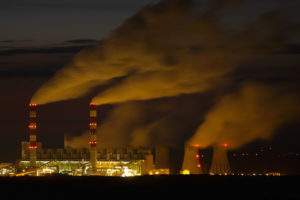
Electric utilities are under pressure to reduce carbon emissions and other pollutants from their power stations. More and more, they are shutting down their coal-fired plants in favor of natural gas and other cleaner energy sources. As a result, fly ash, a byproduct of burning coal, is becoming less available. We use fly ash in concrete for everything from mitigating expansive alkali-silica reaction to controlling temperatures in mass concrete. One way to address potential shortages of fly ash is to make use of marginal fly ash.
In a previous post we discussed how ASTM C1709 promotes sustainability with a test protocol for alternative supplementary cementitious materials. These are supplementary cementitious materials that don’t meet ASTM standards for fly ash, slag cement, or silica fume, but could still be used in concrete. So what does that look like?
Chemical analysis
Beton has been working with marginal fly ashes to find ways to use them in concrete. We normally start with some basic analytical tests in order to see what we’ve got. The standard analytical method for cementitious materials is X-ray fluorescence (XRF), which lists the major constituents in oxide form. ASTM C618, the standard for fly ash, imposes certain limits on the composition.
For example, the sulfate (SO3) content must not exceed 5.0%. However, XRF analysis assumes that all sulfur in the fly ash is in the form of SO3. That may or may not be the case. There are other ways to analyze the sulfate content that distinguish between sulfide (S) and sulfate (SO3). A fly ash that has 12% SO3 according to XRF might have only 2 or 3% SO3 when analyzed by other methods. That is, what looked like a marginal fly ash actually meets ASTM C618 after all.
Sometimes the marketplace imposes limits beyond those in ASTM C618. For example, there is no limit on the alkali content of fly ash in ASTM C618. However, customers may be reluctant to use a high-alkali fly ash with an aggregate that is susceptible to alkali-silica reaction. In that case, we work with our clients to verify that the performance of the fly ash in concrete will be acceptable. For example, we may test combinations of the fly ash with portland cement using ASTM C1567 to see which ones work best.
Fly ashes that don’t meet ASTM C618
Some fly ashes really don’t meet ASTM C618–not even close. That’s no reason to give up on them, but it does require a different approach. One possible use for them is in geopolymer concrete. Geopolymers are combinations of industrial byproducts and minimally processed natural materials that are able to harden and gain strength like portland cement. The technology is still very new. However, the possibility of making concrete with a much smaller carbon footprint, or even net zero concrete, is generating a lot of interest in the construction industry.
Another possibility is to use the fly ash to make cement. That is, you can reformulate the combination of limestone, clay, and other materials to incorporate the fly ash into the raw kiln feed. The fly ash displaces other components that you’d have to mine and grind to the appropriate size. You save on electrical energy (for grinding), mineral resources, and the cost of placing the fly ash in a landfill.
